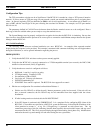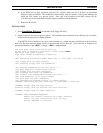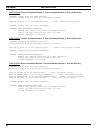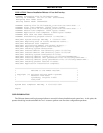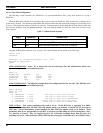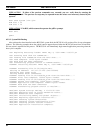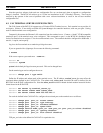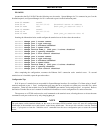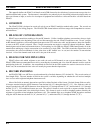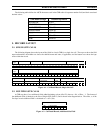
LBI-38965 INSTALLATION
34
Note that previous software loads and user configuration files are not destroyed when an upgrade or configuration
change is installed. The BCU/CAL archives up to 3 of the last installations in the "1.2/backup" directory. These can be
retrieved by the operator in the event of problems with a new software installation, or errors in the end user modified
configuration files.
4.3. CAL TERMINAL SERVER CONFIGURATION
The CAL feature of the BCU/CAL supports up to 2 Emulex P2516 Terminal servers. Each terminal server provides 16
serial ports. Of these, 15 are readily accessible for System Manager site controller interfaces, with one port (port 1) being
used for initial terminal server configuration.
Temporarily disconnect the Ethernet LAN connection from the terminal server. Connect a “dumb” VT100 compatible
terminal to port 1 of the terminal server to be configured. This corresponds to port 1 on the BCU/CAL distribution panel
for the first terminal server and port 17 for the second terminal server. The terminal should be configured for 9600 baud, 1
start bit, 1 stop bit, and no parity.
Log in to the first terminal server under the privileged account.
If you are greeted with a # prompt, first execute the following command:
# access
If the server requests a password enter <CTRL-Z>.
Server> su
Password> system
system is the default privileged account password. This can be changed later.
Set the terminal type used to configure the server.
Server>> change port 1 type VT100
Define the IP address and subnet mask of the terminal server. The IP address, terminal_server_ip, must reflect the
associated address defined in the CAL.DAT file. The subnet mask, subnet_mask, should be the same as defined for the
BCU/CAL in the IP.DAT configuration file. Note that subnet_mask should be in dotted decimal notation instead of the hex
format shown in the IP.DAT file.
Server>> set server ip
terminal_server_ip
Server>> set server subnet mask
subnet_mask
Server>> set server subnet mask 255.255.240.0
For each site defined in the CAL.DAT file, configure the associated port on the terminal server as follows:
Server>> change port
port_no
access remote
Server>> change port
port_no
type softcopy
Server>> change port
port_no
autobaud disabled
Server>> change port
port_no
speed 19200
Server>> change service PORT_<
port_no
> <TCP
port_no
> port
port_no
telnet disabled
Server>> change port
port_no
queuing disabled
Server>> change port
port_no
flow control disabled
TCP port_no is the value defined in CAL.DAT for a particular site.



